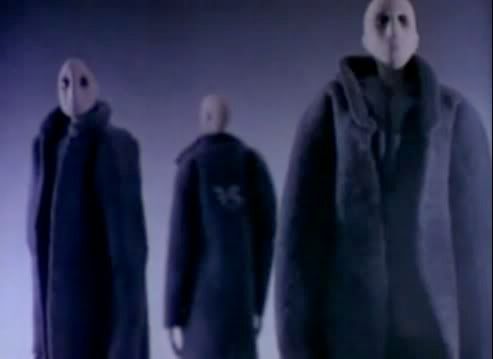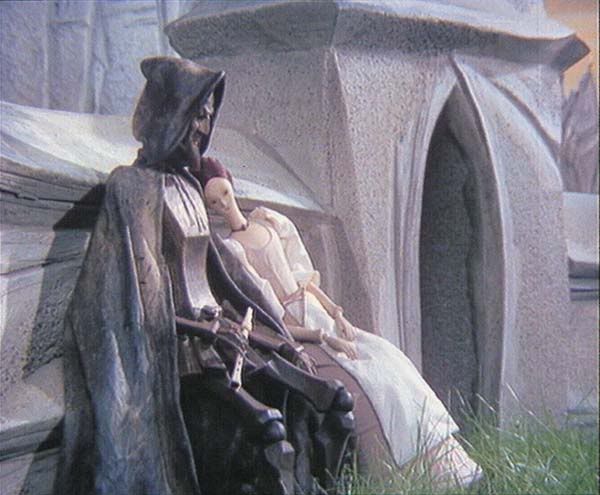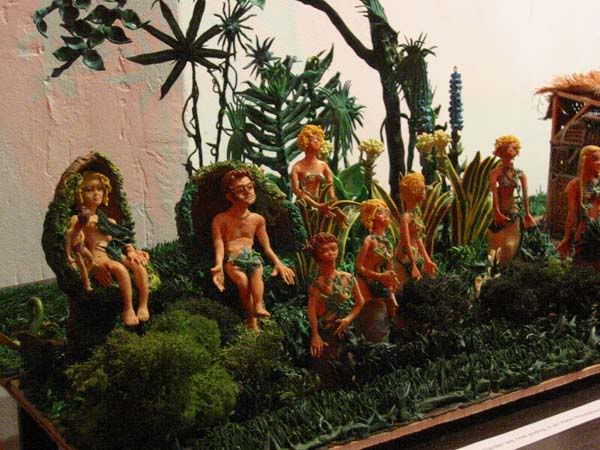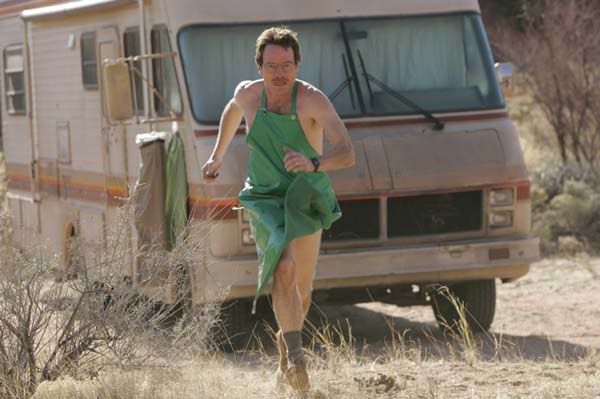
I've been studying various techniques of writing for film, stage and book now on my blog for some time. The idea was to fill my head with an embarrassment of riches, to overwhelm myself, so that no one technique dominated and I would be free to think democratically about the process. Also I hoped to illuminate much of the world of writing, so that the area where the techniques for the short animated film lie would be in one of the dark areas left over... enabling me to locate it by the process of elimination. And Now I feel like I"m prepared to take a stab at it. Following is essentially a wrap-up.... a listing of the techniques I've studied, plus my idea of what it leaves.... an exploration of the dark regions left unexplored by books about writing.
Areas of story I've explored to varying degrees thus far are:
The Aristitlean and Character Driven techniques apply primarily to feature-length live-action films, or novel-length stories, though I do believe some ideas from each can be used in slightly modified form in short films. The cartoon and episodic approaches are suited to of course cartoons and animation in general. And Poetic and Theatre of the Absurd apply to experimental films mainly. Any of these can be used to some extent in a short stopmotion film, but there are more approaches, that I haven't seen discussed or written about anywhere.... I have a vague notion of some of them, but it requires further exploration to bring it to light.
There's no way to develop good, 3 dimensional characters without a lot of time, a lot of dialogue, and a realistic social environment, all things I have no interest in. And I don't think there's any point in trying to develop solid 3 dimensional characters in short animation anyway, unless you're interested in fully naturalistic animation and essentially want to make a live action film in animation - not what I' want at all.
I'm looking for approaches to short stopmotion films that allow for great creativity, that don't try to imitate live action.
I need to analyze films like
Balance,
Quest,
The Sand Castle etc.
In these films there's no real characterization or story development. In Balance the puppets are basically identical, differentiated only by numbers printed on their coats. And this works because it's a story about balance in relationships... social or interpersonal or political relationships... it's about the balance of power and the concepts of selfishness versus sharing. I suppose it has some degree of Aristotle in it... there's an Inciting Incident that kicks off the action, things build to a crescendo through a sequence of rising tension, and there's a climax that seems inherent in the beginning of the film, leaving a final image that imprints itself on the viewer's mind indelibly and makes them think about deeper issues.
The character in Quest is anonymous... a mannikin made of sand. This is right because he represents thirst and dryness, the quest for water. It's episodic and is situation-based, basically a cartoon, only not funny so much as fascinating and compelling.
The strange creatures in Sand Castle are inhuman, but represent early forms of creation, like some sort of early animal forms given life and left to create their environment. They also, like the character in Quest, seem to be made of sand (and created right in front of our eyes from it). Again, no individuality among characters... they're anonymous. It's more about how fun it is to watch these strange whimsical creatures form sand in various ways.
All of these films seem to operate on the
Question, Answer, Question principle.... opening with a mysterious image that makes the viewer wonder what's going on, then answers (partial answers) are provided that lead him on like a trail of bread crumbs toward the ultimate conclusion... the revelation to the question that began it all.
These 3 films also serve to make their drama
palpable (or physical) - turn it into something solid that can be manipulated. The idea of balance is made manifest by a tilting platform suspended in space. Creatures made of sand build a castle from sand... or a creature made of sand searches for water as he dries out. The idea of each film is made
manifest by use of props or environment so the characters can act out the drama physically.
Here's the perfect place to insert a quote from Shelley Noble, stopmoe, blogger and ballet dancer:
- "Movement is consciousness made manifest"
A perfect allegory for animation!
Each of these films does something else as well... they all begin on a
mysterious note and draw the viewer in with curiosity. Who are these strange beings, and what are they doing? You learn more stage by stage as the film progresses, till at the end your curiosity is satisfied. This is what I used to call "unravelling a mystery", and it's something I've written about since my first post about story structure way back on the original blog on my
Darkstrider site.
A few months ago I wrote this:
"A scene can unscroll in such a way that, in the beginning, the audience is mystified... what is happening? And as it plays out, or perhaps in the next scene, or two or three scenes later (or even at the end of the movie) the mystery is revealed. Max Payne is an entire movie done in this way... the beginning is a tableaux - a montage of enigmatic and confusing but enticing images which are only explained by the end of the entire film. This compels a second viewing.
Let the Right One in (just saw both movies today) is set up so that each scene (at least near the beginning... or at least certain key scenes) play out enigmatically, with an answer provided only near or at the end of the scene. As long as there's something to captivate and hold the viewers interest this results in suspense.
I should add that this post was actually inspired originally by seeing Crone, an incredible stopmo short animated by Mikey Please and designed by Ben Gerlis. In addition to the mysterious scene construction there was also a Wolfean twist of sudden powerful violence that led from what seemed to be a somewhat dark cartoon to a stark, intense revelation of the truly darker side of human nature. "
And now I want to amend it with more.... deeper meaning can be put into these enigmatic reveals using ideas from Bill Johnson's A Story Is a Promise. Rather than just be mysterious and draw a viewer in, they can posit a question, or deep meaning that speaks to the human condition. The opening statement of a story should not only captivate the viewer's attention, it should encapsulate the dramatic promise of the story to come.... begin the dramatic movement that is the essence of the story.
One idea that's emerging as I think about this --
It seems you can use some of the basic concepts I've been learning in my studies into story, but in abbreviated form -- characters need not be fully-realized, the society in which the film is set can be a microcosm - a small self-contained world separated from the world of drab reality - the story itself can be very brief and to-the-point, no need to fully develop it in great depth the way you would for a longer film. It's about brevity - reducing things to their essence. In fact in all the films I discuss in today's post there are no real characters at all... they're all pretty vague and nondescript. I think in films of this nature character just gets in the way... these puppets are only ciphers... stand-ins... the
ideas of characters.
But I do believe it's necessary to use some of the principles of good story development to create a strong
dramatic movement and
tension, and to provide a good sense of resolution at the end. Unless of course you're doing a purely experimental film or aren't interested in drama. Bear in mind.... what I'm seeking here are ideas for the kinds of film I want to make... I'm sure there are many other ways to go.
*** *** ***On the issue of dramatic movement... it occurs to me that both Balance and Quest have a pretty good dramatic concept embodied in them -- while The Sand Castle really doesn't. In Balance and Quest there are characters who are fighting against each other or against their environment for something they desperately need or want so badly they'll endanger their own lives or the lives of others to attain it. But The Sand Castle is more a whimsical creation myth with nothing really at stake. Creatures are made of sand, then build a castle from sand. There's no real tension anywhere... nothing to lose.
Analysis of the film Crone:At first a question is set up....
Who is the narrator?
Additional questions...
If the narrator is really a crow, why does it have the voice of a woman? and why does it seem so ominous, as if its intentions are evil?
Why has it "been sat here" for so long?
We don't get the answers to any of these questions yet, we must watch to learn. And the ominous atmosphere is interesting enough to make us want to do that.
The narration continues. In lieu of any other explanation, we assume the crow is the narrator. Then suddenly something happens to dispel that notion... the camera 'blinks' from a low-level shot, looking AT the crow! This leads us to believe it's a POV shot, most likely from the narrators viewpoint.... so the narrator isn't the crow, it's something down on the ground looking at the crow.
In the next sequence, there's an indication that grass, in fact all vegetation - is subject to the narrator's power... serves it as a weapon of some sort. "green fingers" etc. And we see grass and leaves trembling and moving seemingly like conscious things, as if moving toward someone with menacing intent. This begins a new thread... the idea that the narrator either IS vegetation, or somehow controls it - is in league with it.
The woman who watches the old man walking to the bench has a lot of plants in her bathroom... she's watering them as she watches him. This increases the sense of menace from plant life... it seems to be multiplying and dominating the screen more and more.
In fact the next shot is a downshot of nothing but a field of grass and some branches in front of the camera, with a slow pan and the sound track increasing the sense of menace and importance of the grass.
And then we see something new... a little pink worm of some kind wriggling amid all the grass, almost like a blade of grass itself, but pink and writhing with more animation, more life.
This completes something... there has been a crow, there has been talk of the narrator searching the ground for morsels of food, and now a worm. Birds eat worms... everyone knows that. At this point we expect the crow to eat the worm. What could be more natural?
Next shot... the crow sees the worm and swoops on it. Again we hear the narrator talk about "something catching her eye" while talking about food. But suddenly there's a reversal... prey becomes predator as the "worm" springs up, stretches to what would be an impossible length for a normal worm, and grabs the crow in mid-flight.... stops its forward momentum instantly and slams it repeatedly against the ground.
This is shocking!! So far everything has obeyed normal, real-world physics, and though this is an animated film, there haven't been any unrealistic creatures... only people and vegetation like you'd see in any park. Now we're suddenly and violently introduced to something new... and we suspect this will answer most if not all of the questions posed up until now.
The poor crow is killed mercilessly and dragged down into the ground. The camera follows along, the sound track providing a chilling rumbling sound as we plunge into the depths of the earth. Skulls litter the dirt as we progress... there has been a lot of killing here.
We emerge in an underground chamber where a strange cronelike creature sits. The wormlike tendril that snatched the crow drags it through the ceiling and brings it right to the crone's mouth where she takes a bite... raw and with feathers and all still intact. This creature eats like some wild beast.
Personal note... this creature reminds me of Grendel or possibly Grendel's mother. But that's neither here nor there at the moment.
We see that the tendril is one of a pair that emerge from the crone's forehead like feelers of an insect or something.
Is she holding a skull and talking to it? Or is it alive and on some kind of long neck... perhaps a part of her body, or another creature altogether? I can't tell, but then the online version of the fim is very dark and low resolution... a better copy might resolve the issue. I also have a hard time understanding some of what the narrator says, which if I understood it might explain some points I missed.
But we now realize that the cronelike being is the narrator. The main question posed at the beginning of the film (Who is the narrator? Also Why does shoe sound menacing and evil?) has been answered, and in a thrilling manner. Some mystery still remains, but it doesn't all need to be answered... this is a monster, and most likely we'll never fully understand it or its origin. I think it's best we don't actually... monsters become very mundane when explained fully. They should be mysterious.
As the closing theme begins to play and gets louder, announcing the end of the short film, we rise up rapidly along the same path we entered the underground lair, and see a little girl who thinks she sees a worm. It grabs her and begins to give her the same treatment the crow received. then the camera goes black... the film is over.
We never learn the true nature of the crone.. is it a woman who got herself stuck in here and perhaps the glowing green sludge she sits in is some kind of nuclear waste that caused her to mutate into this monster? We'll never know. It doesn't matter... the big question has been answered, and the structure of the film has been completed. We know by the rising of the music and the end credits that it's over, and it FEELS like it's over. It's achieved a sense of closure, or catharsis. And what's more, the abrupt, shocking revelation at the end has left us pondering.
This isn't an inhman monster... it's very human, much like Grendel... in fact, it suffers from lonliness and frustration, just like people can do. It seems to have been suffering like this for a long time, and this has twisted its nature into what it has become. There's something tragic about it (or am I reading Grendel into this character?).
This film doesn't lend itself to an Aritsotlean analysis... there's no main character, no problem that needs to be solved, no inciting incident. Instead the viewer's mission is to determine who the narrator is. The film seems to be built entirely on the question, answer, question technique.







